
The Duling Educational and Cultural Centre exemplifies the impact of culturally respectful, sustainable development. Located in the picturesque Hakka village of Duling in Guigang, China, this ambitious project was led by students from the University of Hong Kong under Project Mingde. Nestled in Guangxi’s countryside, Duling is home to around 3,000 Hakka people who deeply value education and hard work. Despite regular rainfall, the village faced a paradoxical lack of fresh water. This project addressed both infrastructure needs and the preservation of the village’s cultural heritage.
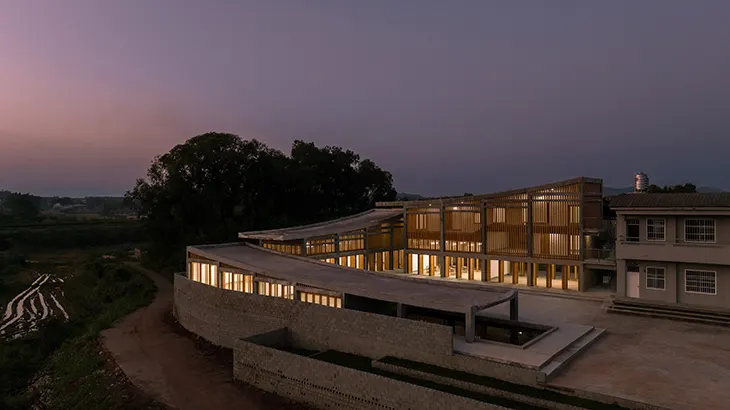
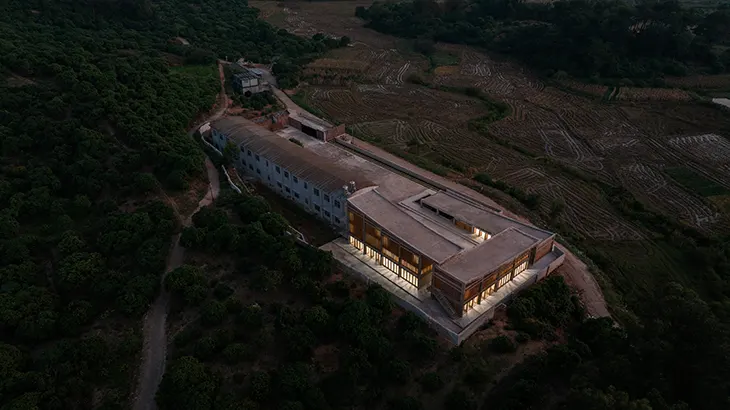
The first phase focused on renovating the existing school building, strengthening its structure, and adding a roof for protection against the weather. These renovations provided a safer space for the children of Duling, creating an environment conducive to learning and play. Additionally, a sustainable toilet facility was introduced, addressing hygiene issues that affected the younger generation. This project wasn’t just about restoring a building but also about fostering a sense of hope and pride in the community.
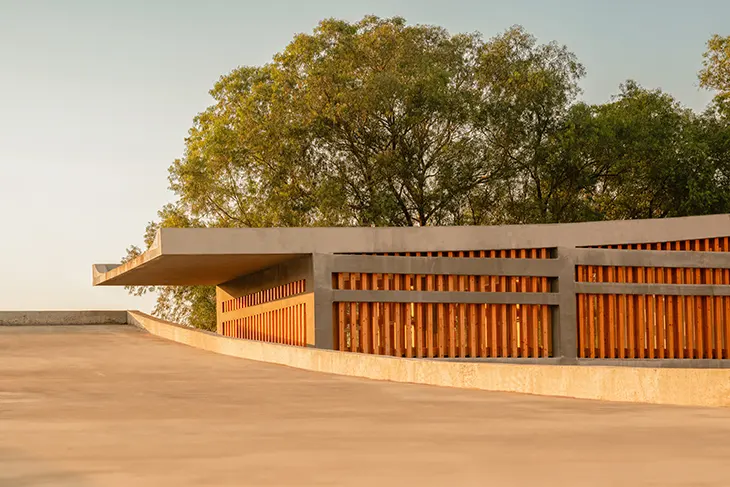
The second phase included constructing a kindergarten and cultural center. The new structure made use of the abundant rainfall, with tiered roofs channeling rainwater into a lotus pond for natural filtration and storage. This helped address the village’s water scarcity while also celebrating the cultural importance of water in Hakka tradition. The cascading roofs and pond were designed to harmonize with the surroundings, respecting nature while offering practical solutions.
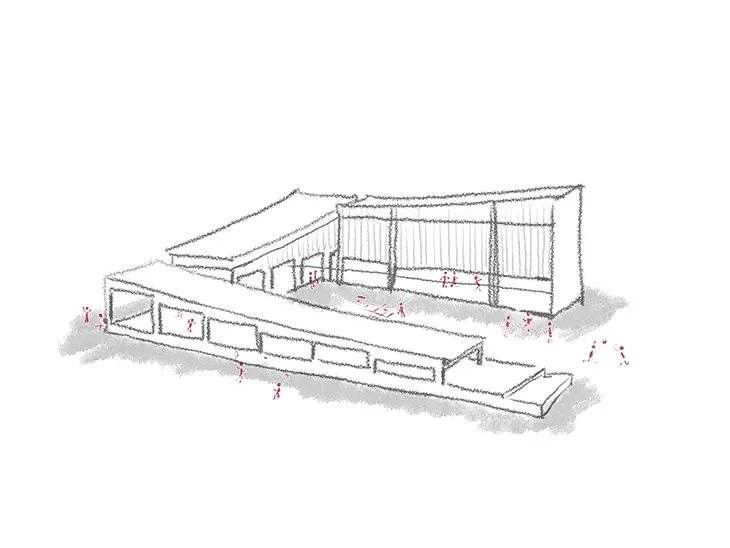
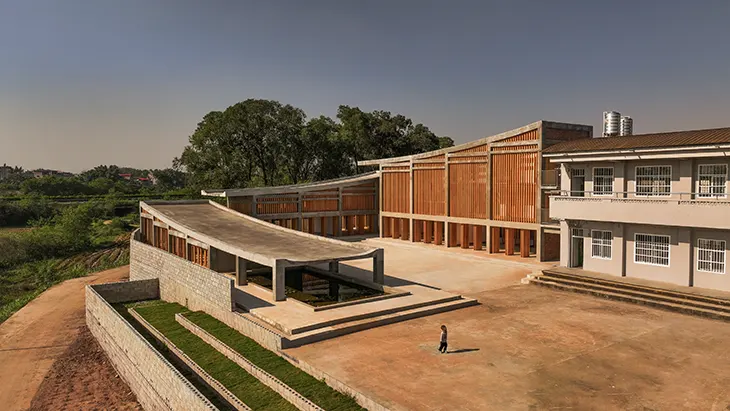
The design went beyond functionality; it held deep symbolic meaning. The lotus pond served as both a reservoir and a cultural symbol, representing purity, education, and sustainability. Drawing from traditional Hakka values, it formed the core of the design. The architects also prioritized flexible spaces, where classrooms flowed into outdoor areas to maximize airflow and encourage interactive learning. This flexibility allowed the community to shape the space based on their needs, reflecting the dynamic nature of village life.
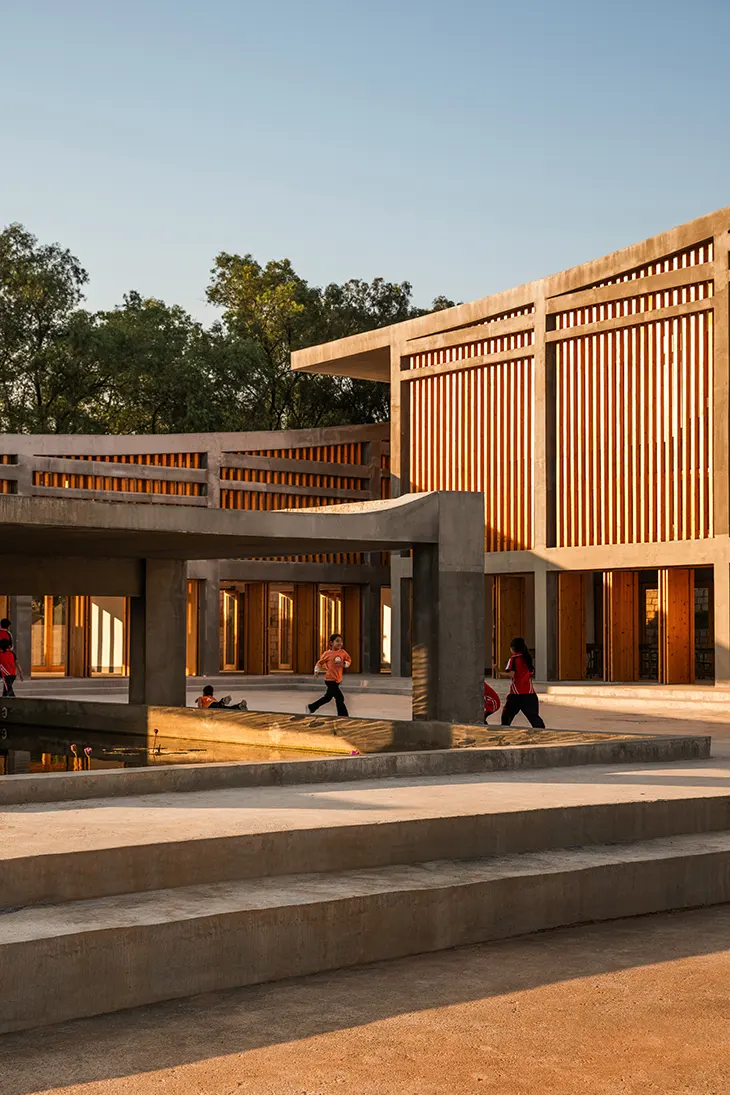
This thoughtful approach turned the Centre into a central hub for village activities, fostering connections within the community. Beyond serving as an educational facility, it also provided a venue for gatherings and cultural exchanges. The open design invited people to engage with both the built and natural environments, embodying the resourcefulness and connectedness of the Hakka people.

Ultimately, the Duling Educational and Cultural Centre stands for more than just its physical structures. It embodies the principles of humanity, compassion, and cultural respect. The project demonstrates that architecture, when crafted with a focus on tradition and sustainability, can foster resilience and strengthen community ties. It highlights the potential of thoughtful design to break down barriers, promote unity, and provide spaces that honor both cultural roots and contemporary needs.



